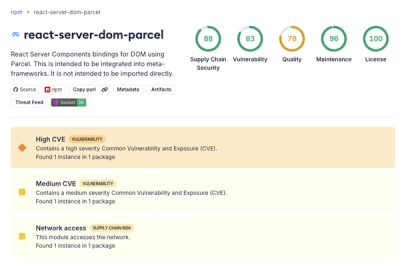gatsby-source-mesh
Source plugin for pulling data into Gatsby from a Gentics Mesh endpoint.
Install
yarn add gatsby-source-mesh or npm i gatsby-source-mesh- Make sure plugin is referenced in your Gatsby config, as in the
example below
gatsby develop
Testing plugin contributions
cd to the Gatsby install you want to test your changes to the plugin code
with, or clone @gentics/gatsby-mesh-example- If you cloned the example or previously installed the plugin through
yarn
or npm, yarn remove gatsby-source-mesh or npm r gatsby-source-mesh
mkdir plugins if it does not exist yet and cd into it- Your path should now be something like
~/code/mesh/myKillerGatsbySite/plugins/
git clone https://github.com/gentics/gatsby-source-mesh.gitcd gatsby-source-meshyarn or yarn && yarn watch in plugin’s directory for auto-rebuilding the
plugin after you make changes to it—only during development- Make sure plugin is referenced in your Gatsby config, as in the
example below
- From there you can
cd ../.. && yarn && yarn develop to test
Every time you rebuild the plugin, you must restart Gatsby’s development server to reflect the changes in your test environment.
Usage
In your gatsby config...
plugins: [
{
resolve: `gatsby-source-mesh`,
options: {
endpoint: `graphql_endpoint`,
token: `graphql_token`,
query: `{
me {
uuid
username
}
nodes {
elements {
uuid
schema {
name
uuid
}
parent {
uuid
}
children {
elements {
uuid
}
}
path
fields {
... on vehicle {
name
description
vehicleImage {
uuid
path
fields {
... on vehicleImage {
image {
width
height
}
}
}
}
}
... on category {
name
slug
description
}
... on vehicleImage {
name
image {
fileName
width
height
}
}
}
}
}
}`,
},
}
],
Gatsby’s data processing layer begins with “source” plugins, configured in gatsby-config.js.
Here the site sources its data from the Gentics Mesh endpoint.
Use an .env file or set environment variables directly to access the Gentics Mesh endpoint and token.
This avoids committing potentially sensitive data.
Plugin options
| endpoint | Indicates the endpoint to use for the graphql connection. The graphql URL will also be used to select your project. Example: https://demo.getmesh.io/api/v1/demo/graphql |
| token | The API access token. By default the anonoymous user will be used. |
| query | The GraphQL query to execute against the endpoint. The parent/children properties should always be added otherwise the relationships between the nodes can't be created. Currently only agreggation fields (nodes, users, roles...) can be used. |
How to query : GraphQL
This source plugin will load all nodes of Gentics Mesh and transform them into gatsby nodes. If you want to load specific fields of a node you need to adapt the query within your gatsby-config.js and include the fields.
Current limitations
No automatic paging
The aggregation results will not be automatically be paged and thus only the specified amount of elements will be loaded. (default: 25)
You can however increase the page size this way:
{
nodes(perPage: 1000) {
elements {
uuid
}
}
}
Multilanguage support
Mutlilanguage support has not yet been tested.
You can however load all language variants of a node this way:
{
nodes {
elements {
uuid
languages {
fields {
... on vehicle {
slug
}
}
}
}
}
}
length must be aliased
If you have a field named length it must be aliased to something else like so:
myLength: length. This is due to internal limitations of Gatsby’s GraphQL
implementation.
Other TODOs
- Add better multilanguage handling
Fork
This source plugin is a modified fork of the gatsby-source-graphcms plugin.



